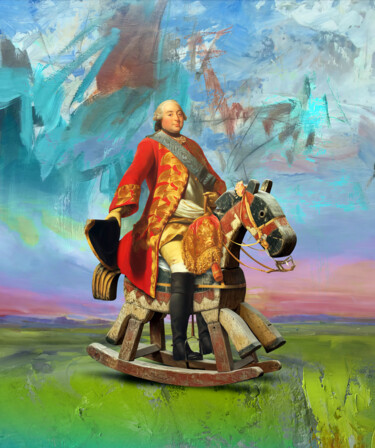
903 原始限量版和数字艺术作品出售:
你在找出售原创数字艺术作品吗?
探索所有风格和所有数字艺术技术:当代艺术、街头艺术、抽象艺术、具象艺术...... ArtMajeur 迎合所有艺术敏感性,20 年来一直在您身边庆祝美,有超过 360 万件当代艺术作品供您探索。 .. 或获取!发现来自世界各地的当代艺术家的作品,用一流的方式装饰您的室内!单纯的艺术爱好者还是公认的收藏家?找到最喜欢的画布或绘画,真正增强您的装饰效果。 ArtMajeur 为您提供世界上最优秀的当代艺术家的原创作品、限量版和艺术版画。在 ArtMajeur 上,数字艺术作品由艺术市场的爱好者和专家挑选。我们为您精选时尚、获奖、知名艺术家的原创作品,以及当代艺术领域新崛起的价值,为您在线购买数字艺术提供指导和帮助。
Discover contemporary Humor Digital Arts on ArtMajeur
Contemporary Humor Digital Arts is a fascinating and innovative art form that has emerged in recent years. This type of original artwork is created using digital tools, software, and various support materials. Some of the common materials used in Humor Digital Arts include canvas, paper, acrylic, and ink. What makes this type of art unique is its ability to blend humor, satire, and social commentary, creating a powerful and thought-provoking message that captivates the viewer. Additionally, Humor Digital Arts often challenges traditional artistic conventions, pushing the boundaries of what is considered art. As a result, this art form has gained popularity among younger audiences and has become a significant trend in the contemporary art world.

©2025 José Luis Guerrero
Origins and History
Contemporary Humor Digital Arts emerged in the mid-2000s as a reaction to the emergence of social media and digital platforms as primary means of communication. Artists began experimenting with digital technologies to create humorous and satirical works that critiqued contemporary culture and politics. This period saw the rise of memes, GIFs, and viral videos as popular forms of digital humor. The use of social media platforms like Twitter and Instagram as distribution channels allowed artists to disseminate their work widely and quickly, resulting in a new era of digital art that is accessible and shareable.
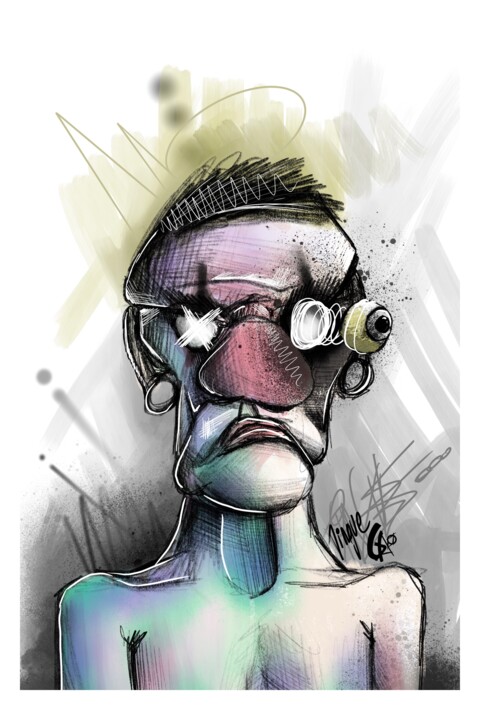
©2023 Sébastien Gaonach
Evolutions of theses works in the contemporary art market
Humor Digital Arts have recently experienced a remarkable evolution in the contemporary art market. This type of art has become increasingly popular, especially among younger generations. Humor Digital Arts can take the form of memes, gifs, videos, or interactive installations, and they often use satire, irony, and parody to convey their message. These works are essential in reflecting the cultural and social issues of our time, as they offer a critical and humorous perspective on the world around us. The importance of Humor Digital Arts in the contemporary art market is undeniable, as they have the power to engage the audience and provoke critical thinking. As a result, their value has been recognized by curators, collectors, and institutions, who have started to include them in exhibitions and collections. The evolution of humor digital arts has brought a new wave of creativity and humor that reflects the ever-changing world we live in.

©2024 Suima
Related Famous Artists
Contemporary humor digital arts have gained considerable popularity in recent years, and several artists have made a significant impact in this field. One such artist is the American painter, illustrator, and animator David O’Reilly. His work often features surreal and absurdist elements, and he has gained recognition for his video game designs and animated films.
Another prominent artist in the realm of contemporary humor digital arts is the British illustrator and animator Steve Cutts. His work often satirizes modern society and its obsession with consumerism and technology. Cutts’ animations have been widely shared on social media and have garnered millions of views.
The American artist and writer Molly Soda is also well-known for her work in digital humor. She often explores themes of identity and self-expression through social media platforms such as Instagram and Twitter. Her work challenges conventional notions of what is considered "art" and often blurs the lines between personal and public spaces.
The Canadian artist Jon Rafman is another notable figure in the world of contemporary humor digital arts. Rafman’s work often incorporates elements of virtual reality and explores the relationship between technology and human experience. He has gained recognition for his video installations and multimedia projects.
Finally, the American artist Cory Arcangel is known for his work with digital media and appropriation. His pieces often remix and repurpose existing material, such as video game graphics and pop culture references, to create humorous and thought-provoking works of art. Arcangel’s work challenges our understanding of originality and authorship in the digital age.

©2025 Vicent Creatik
Notable contemporary Humor Digital Arts
Contemporary humor digital arts have become increasingly popular in recent years. These artworks are created using digital technology to create humorous and often satirical pieces that comment on modern society. Here are some well-known examples:
"The Persistence of Chaos" by Guo O Dong, created in 2019, is a laptop infected with six of the world’s most dangerous computer viruses. The artwork comments on the vulnerability of technology and the potential consequences of a cyber attack.
"This is Fine" by KC Green, created in 2013, is a comic strip featuring a dog sitting in a room on fire, saying "This is fine." The artwork has become a popular internet meme and comments on the human tendency to ignore problems.
"The Whale Synth" by Tom DeLonge, created in 2019, is a music video featuring a cartoon whale playing a synthesizer. The artwork is a humorous take on the music industry and the perception of musicians as larger-than-life figures.
"The Uncomfortable" by Katerina Kamprani, created in 2013, is a series of household objects that have been intentionally designed to be difficult or impossible to use. The artwork comments on the absurdity of modern design and the way in which functionality is often sacrificed for aesthetics.
"The Museum of Internet" by Ryder Ripps, created in 2013, is an online museum featuring exhibits such as "The History of the Selfie" and "The Evolution of the LOL Cat." The artwork comments on the way in which the internet has become a cultural phenomenon and has changed the way in which we communicate and interact with each other.

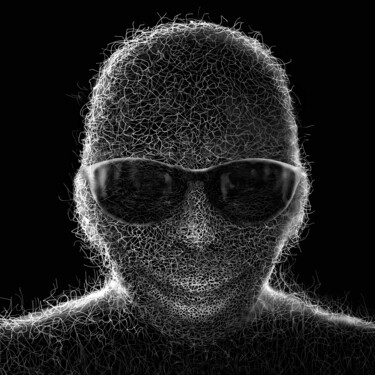
Vicent Creatik
数字艺术 | 39.4x39.4 in
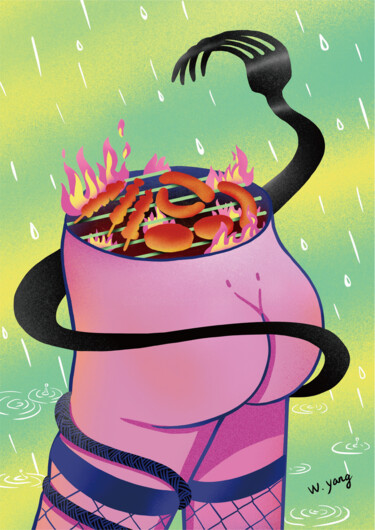
Yang Wang
数字艺术 | 16.5x12.6 in
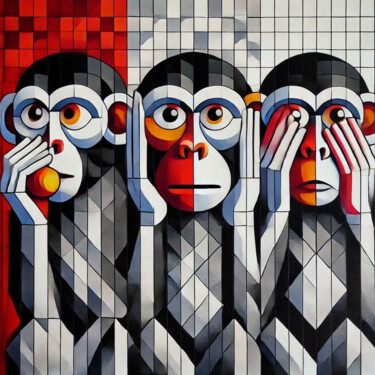
Lee Eggstein
数字艺术 | 47.2x47.2 in


Ojolo - Abel García
数字艺术 | 30x30 in






























